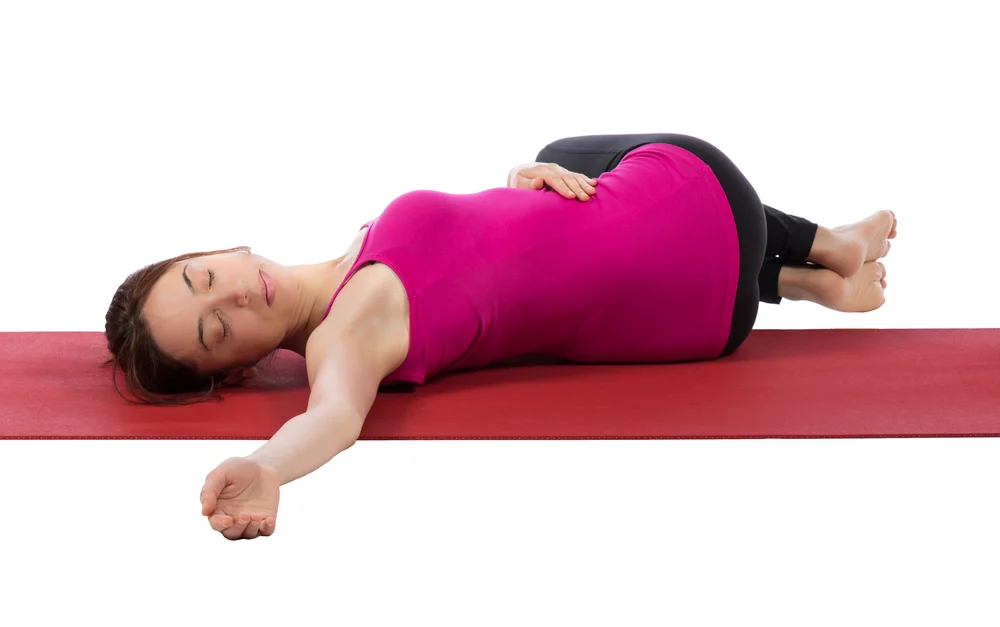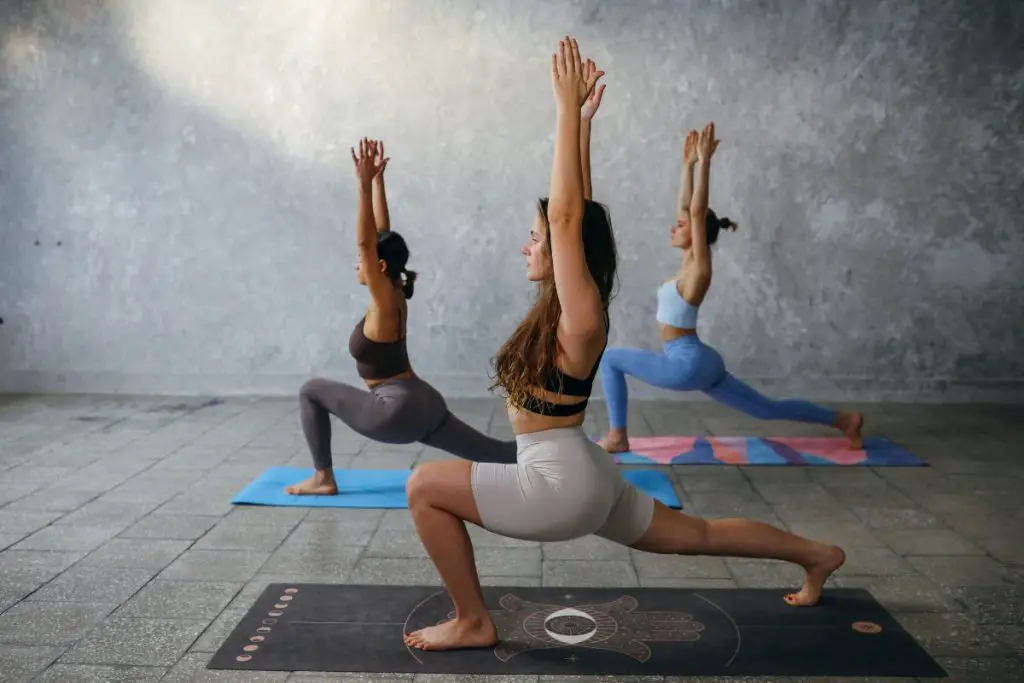Exercise

There are lots of reasons why you may experience trapped gas in the stomach. It could be to do with your diet, with stress, a long flight you took or a lack of exercise.
Whatever the reason, it can be very uncomfortable. One of the quickest and easiest ways to release gas trapped in the stomach is pilates.
Any kind of exercise can help to speed up your metabolism and to relieve trapped wind, but pilates is particularly effective.
We have put together this guide to the 5 best pilates exercises that are great for releasing gas from the stomach. Keep reading to find out more.
Why Is Pilates Good For Releasing Gas?
What is it about pilates that makes it so great for relieving trapped wind? When you practice pilates movements, the blood flow around your body increases and your lymphatic system is activated.
This means that blood is getting to the areas of the body that need it, helping them to function better. Your digestion will improve, and your body will be able to push the gas in your stomach through your digestive system.
A lot of pilates movements are designed to engage your core and involve twisting the abdomen. This has an immediate physical effect of pushing the gas trapped in your stomach out and through your digestive tract.
The unwanted air will be expelled, bringing instant relief. These movements accompanied with the correct breathing techniques will also send more blood to your abdomen, helping to alleviate discomfort in that area.
But which movements are the most effective?
The Best Pilates Exercises For Releasing Trapped Gas

Here are 5 pilates exercises that will quickly and effectively relieve trapped gas from your stomach.
1. Pilates Breath
The first exercise is incredibly simple. It is called pilates breath, and is the basic foundation breath for pilates. This is what you need to do:
- Sit in a comfortable position, making sure that your head is nice and tall. Straighten your spine, roll back your shoulders, and engage your core to help you maintain good posture.
- Place your hands lightly on the outside of your ribcage.
- Inhale through your nose. Focus on sending the breath to the back of your ribcage.
- You should be able to feel your fingers spreading apart as you inhale. Your abdomen will stretch out as you inhale.
- When you exhale, think about your ribs zipping together and focus on your belly button dropping back to meet your spine.
- Continue this breathing pattern in a steady rhythm for 2 to three minutes, or as long as you want to.
This exercise will not only help to release trapped gas, it also has other benefits. It will bring your heart rate down, helping to reduce stress.
It can ease anxiety and improve concentration and focus as your brain will be getting more oxygen.
If you find yourself becoming agitated throughout the day, take a few minutes to practice this breathing exercise.
2. Roll Over
This exercise is suitable for beginners and more advanced pilates learners. Here are the steps you need to follow:
- Lie on your mat with your back flat on the ground. Place your arms by your sides.
- Take a few controlled breaths in this position to relax your body.
- Lift your legs up towards the ceiling. Your feet should be in a pilates V with the heels touching and the toes apart
- Inhale deeply, dropping the legs back ever so slightly
- As you exhale, lift your pelvis off the floor. In one smooth and controlled movement, roll your legs up and over your head. Your feet should be pointing at the wall behind you and your thighs should be either side of your head.
- Your arms should remain pressed lightly into the floor, keeping you grounded. Your feet should still be in the pilates V position.
- Breathe in again, and open your feet out so that they are in line with the corners of your mat- just a little wider than your shoulders. If you can, bring your feet down to touch the mat behind you.
- As you exhale, slowly roll your legs back down so that they are touching the floor. Do this is a controlled way, focusing on each vertebrae one by one. When your tailbone reaches the mat you can gently bring your legs back down into the starting position.
- Repeat this exercise 8 to 10 times.
If you are new to pilates then you may not have the flexibility to get your legs all the way to your head.
Just go as far as you can- don’t force it or you could cause an injury. The more you practice, the further you will be able to roll your legs.
3. Twist
This is a very simple yet effective exercise for releasing gas. This is what you need to do:
- Sit on your mat with your legs extended out in front of you. Remember to engage your core in order to keep your head high, your shoulders back and your back straight.
- You ankles should be flexed, so that your toes are pointing up into the air
- Create a T shape with your arms, extending them out either side of your body.
- Inhale deeply. As you exhale, twist your upper body and abdomen to the left while keeping your hips square and front facing. Your feet should remain side by side – if you are twisting from your hips then your feet will separate.
- Once you have reached the full extent of your twist, pulse twice in that position.
- Inhale, and gently move your body back to the central position.
- Repeat the movement, twisting to the opposite side.
- Complete 5 movements on each side
This exercise helps to strengthen your core. The pressure on the abdomen will also expel any trapped air and relieve gas. If you have tight hamstrings then you may find it hard to straighten your back.
If this is the case, you can sit with your legs together, knees raised, and feet flat on the floor. This will take the pressure off your hamstrings but will still allow you to achieve a full rotation of the abdomen.
4. Swimming
This exercise may feel uncomfortable to beginners who haven’t done much work on their back strength, but it is great for releasing trapped gas in the stomach. Here is the breakdown:
- Lie belly down on your mat with your forehead on the floor.
- Extend your arms out in front of you and your legs out behind you
- Anchor your pelvis by pushing your pubic bone into the floor
- Lift your chest and arms off the floor, putting you in a ‘superman’ pose.
- Lift your left arm and left leg, then your right, then your left – alternating in a flutter kick motion.
- While you do this, you should be inhaling for 5 counts and then exhaling for five counts.
- Continue this motion for 5 sets of breaths, or more if you want.
The trick to this exercise is to remember to engage your core. It will help to tone your back, but it should be your core that is doing most of the work.
Stretching out your abdomen, engaging it, and the pressure on your abdomen from the floor, will all contribute to the release of trapped gas.
5. Bicycle
This exercise gently massages the wall of the intestine and is great for flexion and rotation. Follow these steps:
- Lie on your back with your spine pressed gently into the mat. Bring your legs into table top position – raised in the air and bent at the knee.
- As you inhale, flex your spine that it lifts from the floor.
- Exhale, rotating your abdomen to the left whilst extending your right leg straight out in front of you.
- Inhale, bringing your body back to center and your right leg back into the tabletop position.
- Exhale, rotating your abdomen to the right whilst extending your left leg straight out in front of you
- Make sure that you focus on bringing your elbow up to the opposite knee to make sure you are getting a full rotation
- Repeat this exercise 15 times
You don’t need to rush through this exercise. Take your time to make sure that your movements are controlled and your abdomen stays engaged the entire time.
As you rotate and twist, your thigh will put pressure on your abdomen. This, along with the twisting, will help to force any trapped gas out of your stomach.
Summary
Pilates can be excellent for helping to relieve trapped gas as it improves the circulation of blood through your body and stretches out your abdomen.
The five movements we have described are especially effective and are suitable for beginners as well as more advanced pilates practitioners.
You can repeat these exercises as many times as you need to in order to release trapped gas in your stomach or relieve the symptoms of trapped wind.




